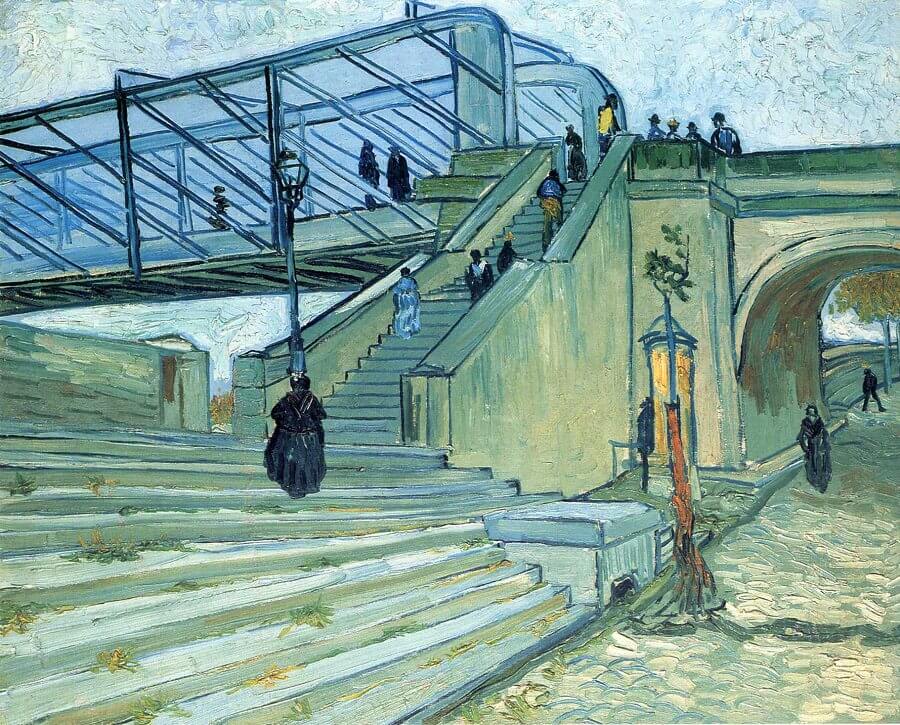Trinquetaille Bridge in Arles, 1888 by Vincent van Gogh

Historically, Arles was an important town with a healthy economy, based primarily on the river trade, and was an important port on the Rhone. With the development of the railway in the nineteenth-century traffic and trade on the Rhone was greatly reduced, and as a consequence Arles became much quieter. It was its reputation as a small, hassle-free place that was attractive to Van Gogh, who was seeking peace and a serene atmosphere to work in after chaotic Paris.
The Trinquetoille Bridge that appears in this painting was an angular metal structure that spanned the river and joined the two sides of the town. The geometric pattern of the bridge in relation to the steps afforded Van Gogh a new and interesting motif, and the subject of bridges was one that he referred to several times during this period. In this painting a slight murky quality is evident in his colours, and this is something he increasingly employed.
Interestingly, although the bridge has since been rebuilt, there is a large tree now growing where the sapling appears in Van Gogh's painting.




















